In Photos: Ancient Tomb of a Celtic Prince Uncovered
Archaeologists with France's National Institute of Preventive Archaeological Research have discovered the tomb of a Celtic prince dating to the fifth century B.C. inside of a giant funerary complex in Lavau. Here's a look at photos of the excavation process and discoveries. [Read the full story on the princely tomb]
Funerary complex
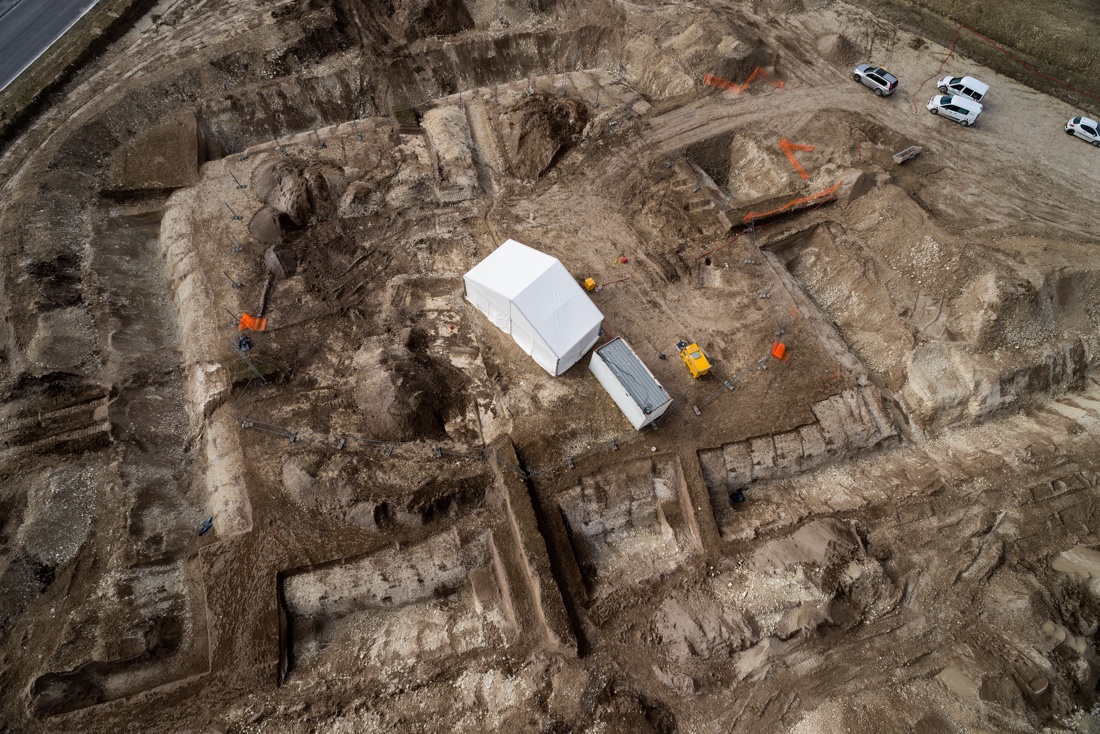
This aerial view shows the site in Lavau, France, where a Celtic prince's tomb was found. Here, a large trench can be seen surrounding the princely tomb, which dates to the early fifth century B.C. (Photo credit: Copyright Denis Gliksman/Inrap)
Burial mound
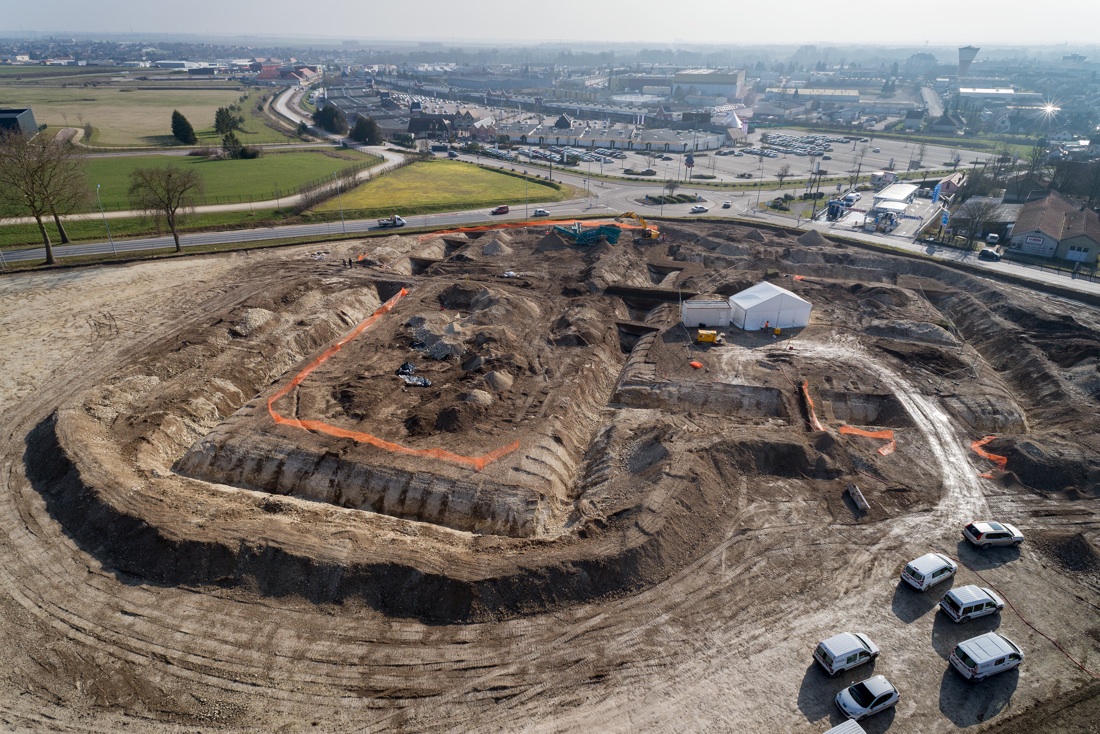
At the center of the burial mound, called a tumulus, which measures about 130 feet (40 meters) across, the deceased individual and his chariot reside at the center of a funerary complex. (Photo credit: Copyright Denis Gliksman/Inrap)
Lavau excavation
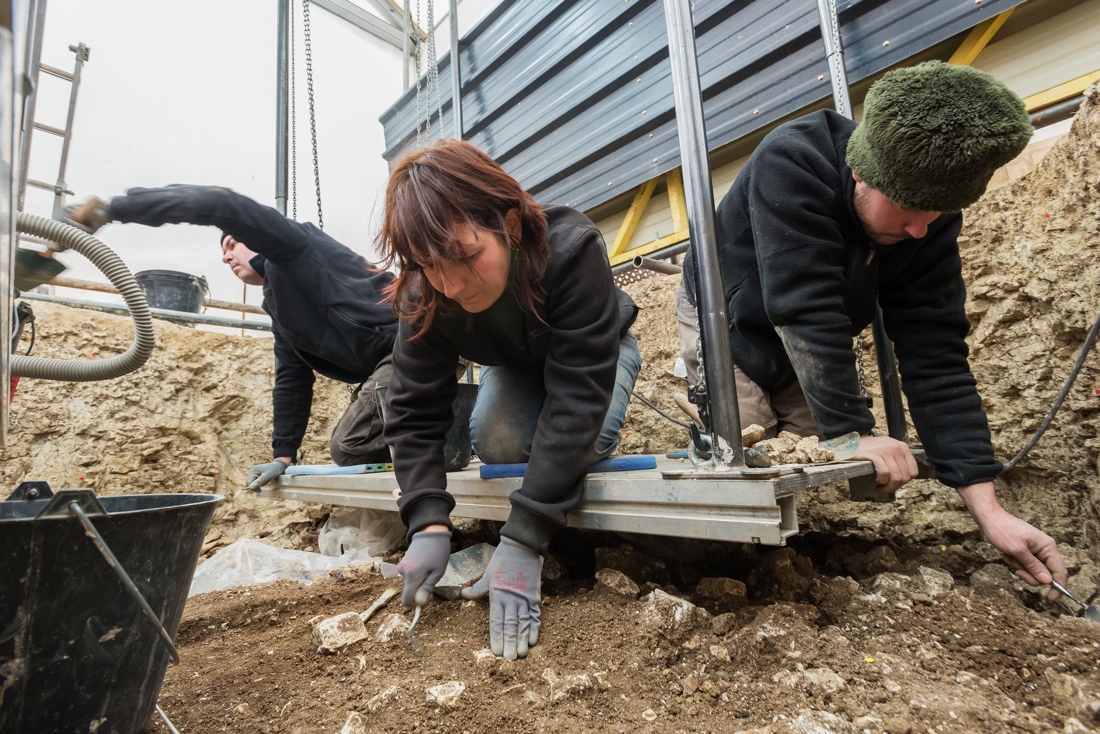
Researchers carefully excavate at the Lavau site where the ancient princely tomb and cauldron were found. The funerary complex where the artifacts were found spans an area of about 150 square feet (14 square meters), making it one of the largest such structures known to archaeologists from the Hallstatt period at the end of the Early Iron Age, the researchers noted. (Photo credit: Copyright Denis Gliksman/Inrap)
Sign up for the Live Science daily newsletter now
Get the world’s most fascinating discoveries delivered straight to your inbox.
Cool cauldron
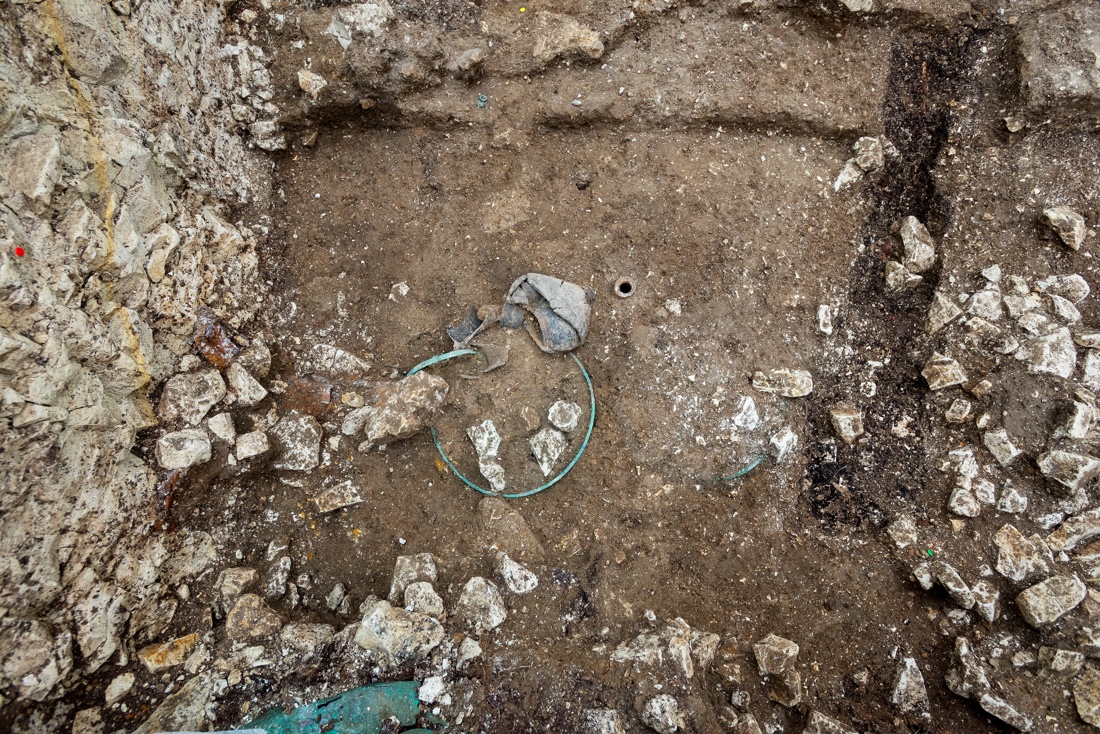
Archaeologists excavated a bronze cauldron, measuring about 3.3 feet (1 meter) across, that they found in the princely tomb in Lavau. (Photo credit: Copyright Denis Gliksman/Inrap)
Cauldron dig
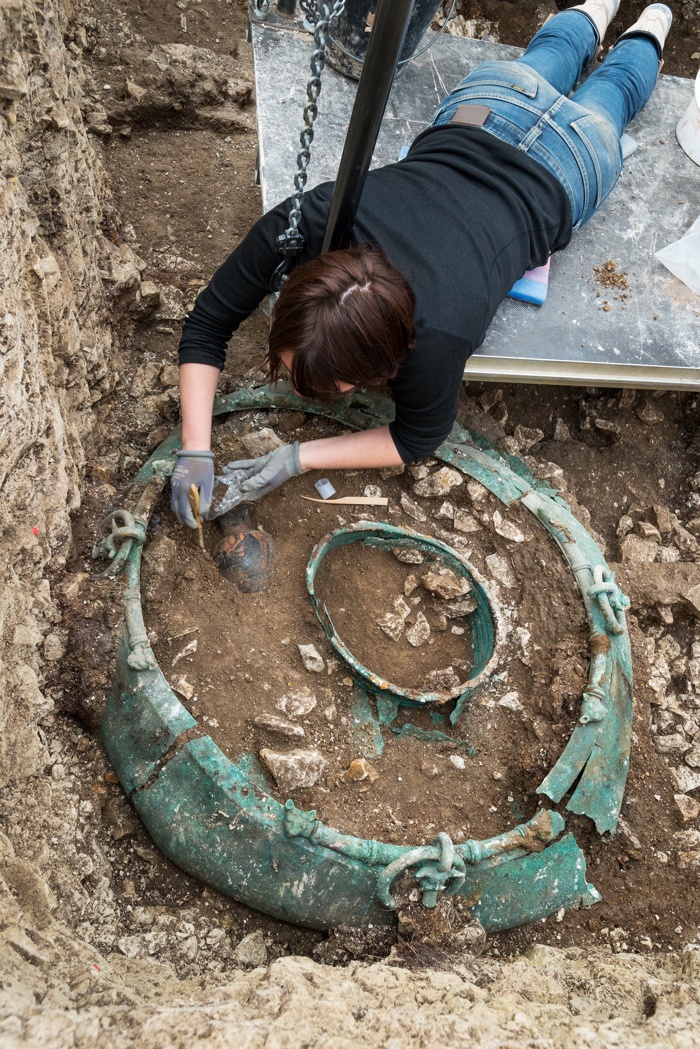
Another view of the archaeologists carefully digging the cauldron out of the sediment in Lavau. (Photo credit: Copyright Denis Gliksman/Inrap)
River god
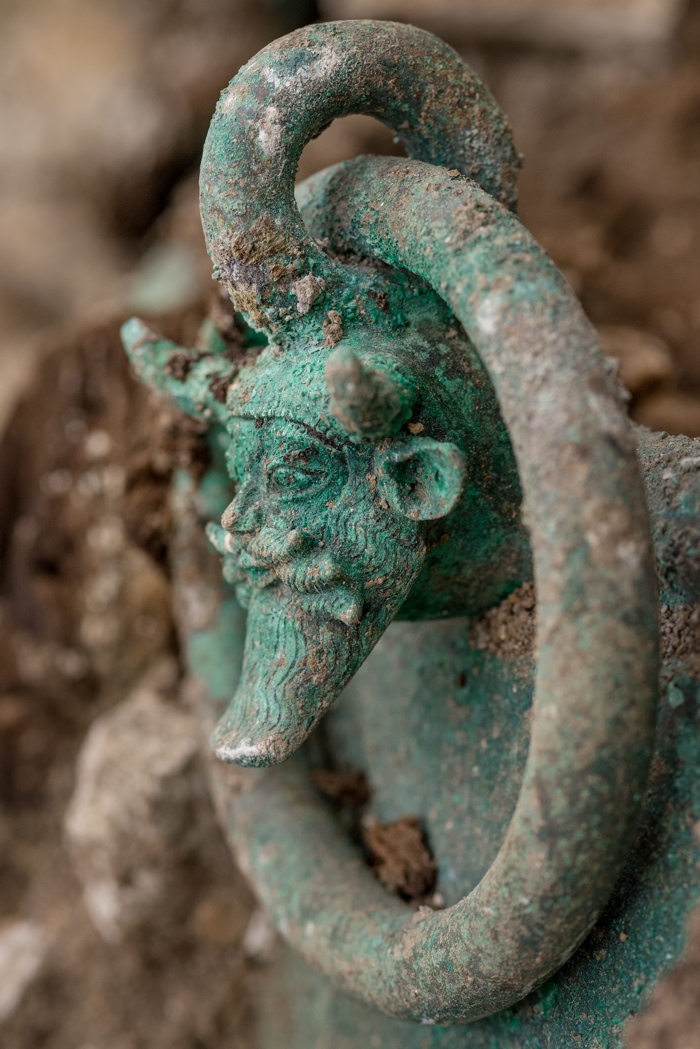
The handles of the bronze cauldron are decorated with the Greek deity Achelous, considered the god of the most powerfully flowing river in Greece, according to the Smithsonian Institution. (Photo credit: Copyright Denis Gliksman/Inrap)
Bronze kitty
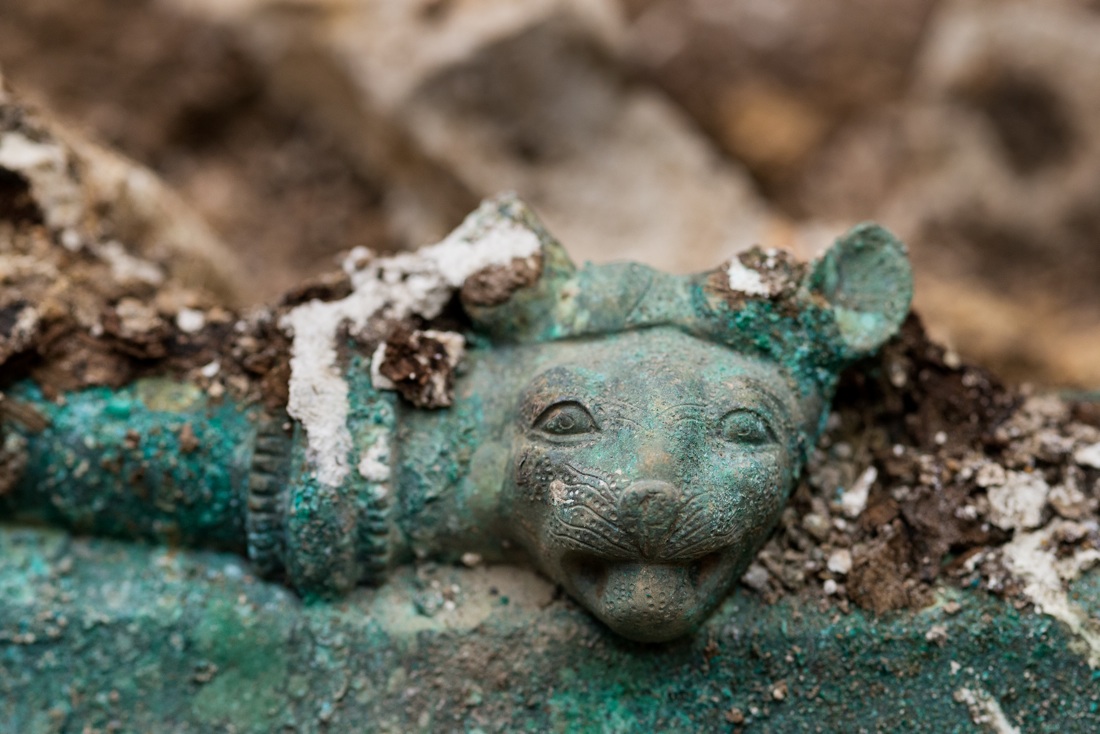
Here, a close-up view of the head of a feline adorning the opening of the bronze cauldron found in the princely grave within the funerary complex in Lavau. (Photo credit: Copyright Denis Gliksman/Inrap)
Princely phalanges
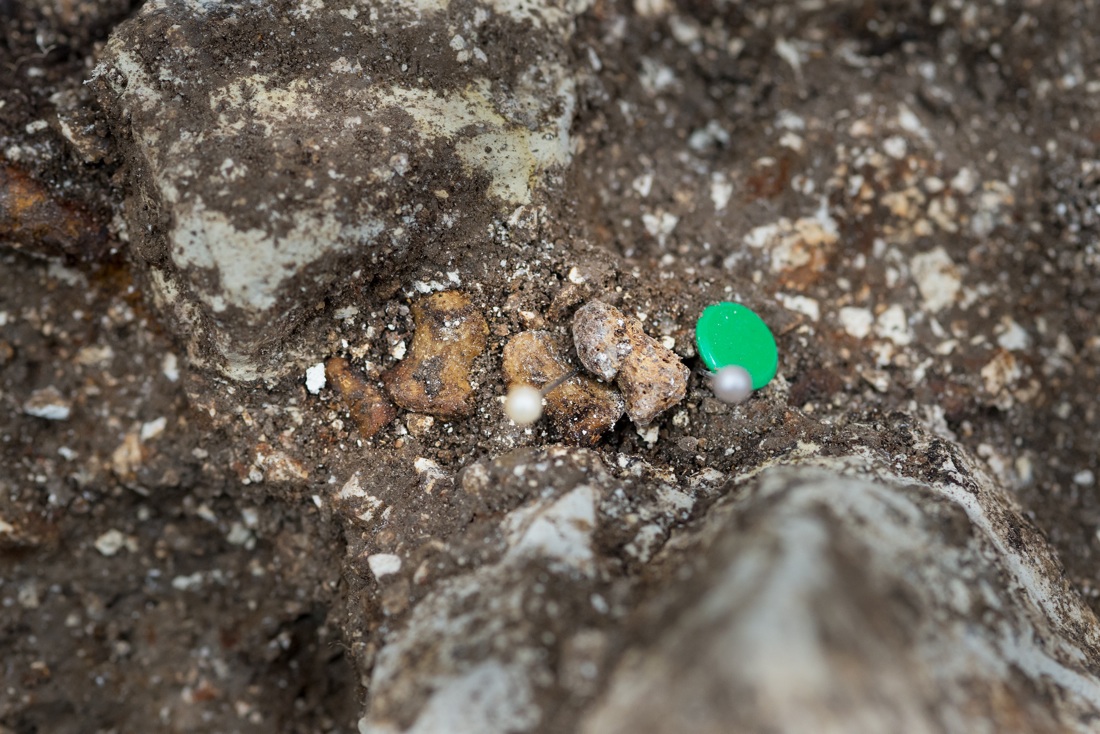
The scientists found the bones of an individual buried within the grave dating to the fifth century B.C. Here, a close-up of the finger bones of that individual in Lavau. (Photo credit: Copyright Denis Gliksman/Inrap)
Golden jug
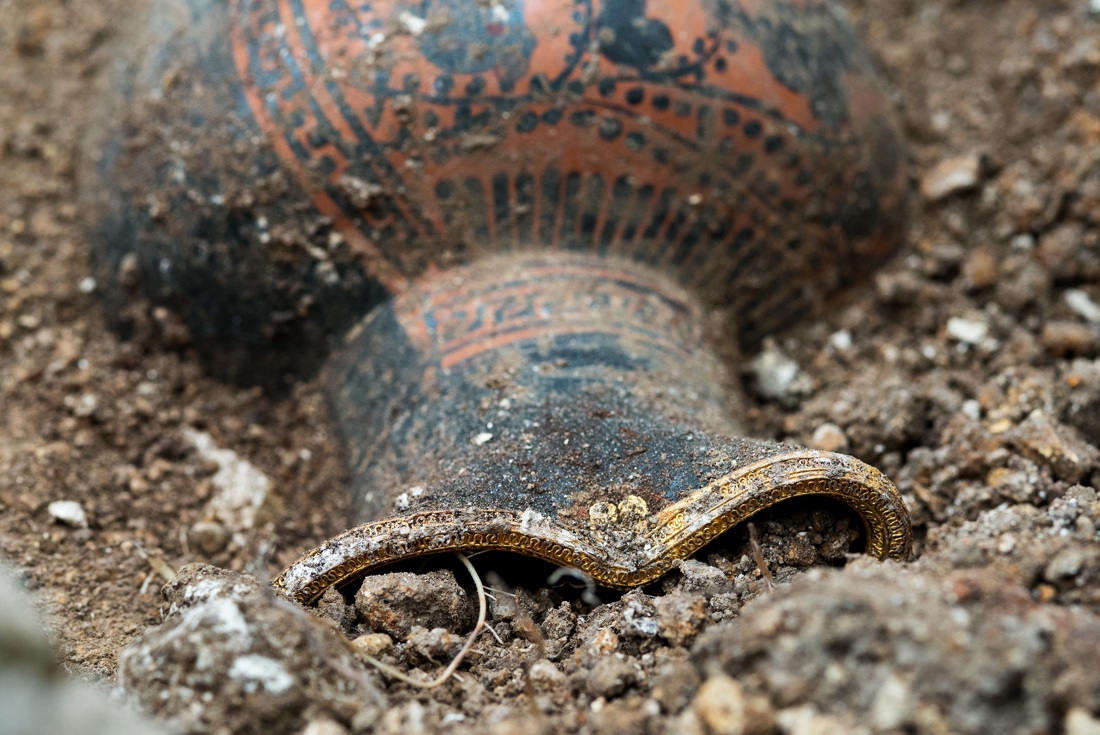
Inside the bronze cauldron from within the princely tomb, scientists found a decorated Greek wine jug, shown here. The lip and bottom of the jug are set in gold. (Photo credit: Copyright Denis Gliksman/Inrap)
Dionysus figure
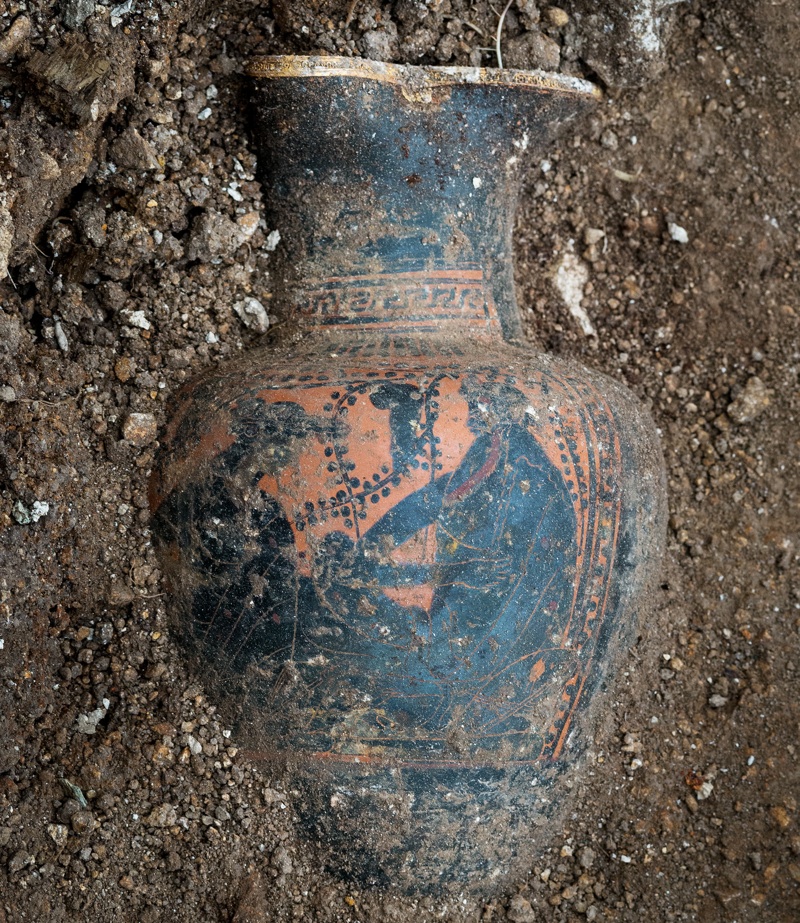
A black-figure decoration on the wine jug shows Dionysus lying under a vine facing a female, possibly a banquet scene, which is common in Greek iconography, the researchers said. (Photo credit: Copyright Denis Gliksman/Inrap)
Follow Live Science @livescience, Facebook & Google+.
Jeanna Bryner is managing editor of Scientific American. Previously she was editor in chief of Live Science and, prior to that, an editor at Scholastic's Science World magazine. Bryner has an English degree from Salisbury University, a master's degree in biogeochemistry and environmental sciences from the University of Maryland and a graduate science journalism degree from New York University. She has worked as a biologist in Florida, where she monitored wetlands and did field surveys for endangered species, including the gorgeous Florida Scrub Jay. She also received an ocean sciences journalism fellowship from the Woods Hole Oceanographic Institution. She is a firm believer that science is for everyone and that just about everything can be viewed through the lens of science.









